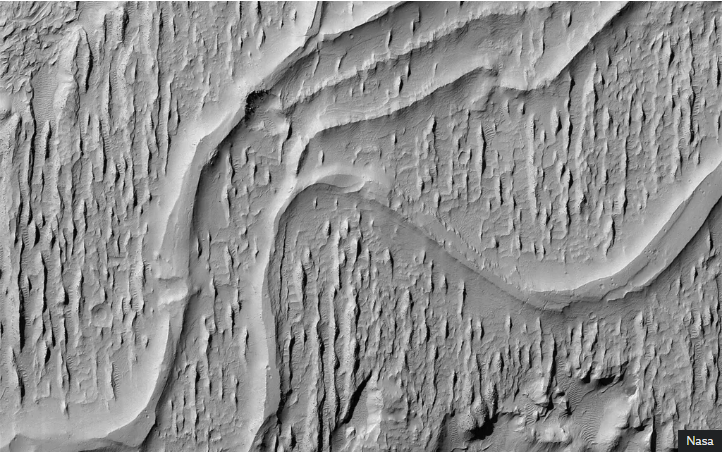While there is frozen water at the Martian poles and evidence of water vapor in the atmosphere, this is the first time liquid water has been discovered on the planet
Scientists have identified water reserves on Mars, deep within the planet’s rocky outer crust.
In particular, the findings come from a new analysis of NASA’s Mars Insight Lander, which landed on the planet in 2018.
The craft was equipped with a seismometer, which recorded the seismic vibrations for four years, called “Marsquakes” (= Martian earthquakes) and coming from the deep interior of the Red Planet.
So by analyzing these earthquakes and exactly how the planet moves, they discovered “seismic signatures” of liquid water.
What did the “pulse” of Mars reveal?
While there is frozen water at the Martian poles and evidence of water vapor in the atmosphere, this is the first time liquid water has been discovered on the planet.
NASA’s Insight mission ended in December 2022 after listening to the “pulse” of Mars for four years.
By that time the researcher had recorded 1,319 vibrations.
By measuring how fast seismic waves travel, scientists have been able to work out what material is most likely to move.
“These are actually the same techniques we use to find water on Earth, or oil and gas,” explained Professor Michael Manga, from the University of California, Berkeley, who participated in the research.
Analysis of the data revealed the existence of water reserves at a depth of 10 to 20 km in the Martian crust.
Can we talk about signs of life on Mars?
Studies of the surface of Mars show that, in ancient times, there were rivers and lakes on the planet.
However, for three billion years, the planet was a desert.
Some of this water evaporated into space when Mars lost its atmosphere. But, Professor Manga said, here on Earth, “much of our water is underground, and there’s no reason why it shouldn’t be the same on Mars.”
This discovery gives a new twist to the search for the existence of life on Mars.
“Without liquid water, you have no life,” Professor Manga said. “So if there are habitable environments on Mars, they may now be deep underground.”
Source :Skai
I am Terrance Carlson, author at News Bulletin 247. I mostly cover technology news and I have been working in this field for a long time. I have a lot of experience and I am highly knowledgeable in this area. I am a very reliable source of information and I always make sure to provide accurate news to my readers.











